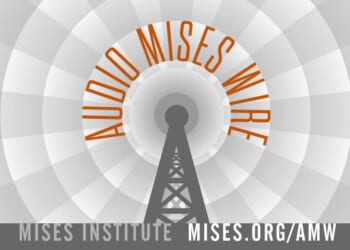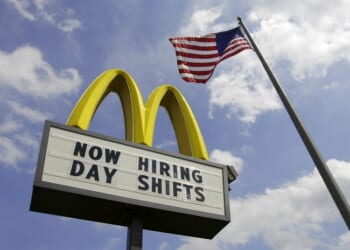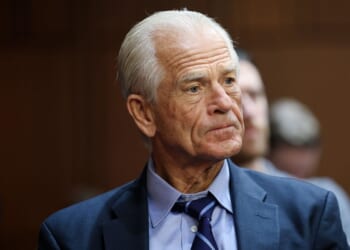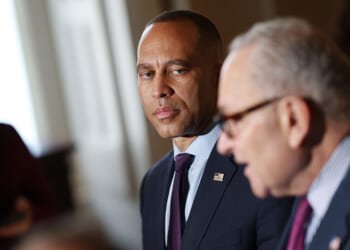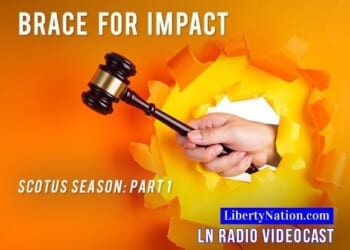‘Here our smart clothes are beyond our means, here in Rome.
A little bit extra has to be borrowed from someone’s purse.
It’s a common fault; here we all live in pretentious poverty.
What more can I say? Everything in Rome comes at a price.’
From Satires, by Juvenal.
There was a time in Ancient Rome when many citizens could barely afford to eat, while slaves undercut their chances of work. And the solution from the imperium? The familiar panem et circenses – bread and circuses.
There are echoes of Roman times in a New York mayoral race that ultimately came down to the cost of living. That, in essence, is what New Yorkers (or at least a sizeable minority) voted for on Tuesday – the bread and circuses of Zohran Mamdani.
They may want to hold their breath as their new 34-year-old mayor, who easily beat former governor Andrew Cuomo, tests out his bag of tricks. He promises to halt all rent increases, impose a $30-per-hour minimum wage by 2030, and subsidise bus fares, daycare and even grocery stores. While Roman emperors once handed out bread, Mamdani plans to dispense free rides, babysitters, peanut butter and steak at discount prices.
Mamdani’s programme suggests an attempt to transform the world’s capitalist capital into a First World version of Havana. The biggest casualties won’t be the much-maligned rich but, as analyst Nicole Gelinas suggests, moderately affluent small property owners. They make up 30 to 50 per cent of rent-controlled landlords and some won’t survive a rent freeze. Similarly, mainly immigrant-run bodegas and small grocery stores will struggle against the city-subsidised competition, while bus riders will find themselves increasingly sharing space with the city’s feral youth and plain old crazies.
Of course, much of what Mamdani proposes may never come to pass. The state controls most of his taxation power, and many proposals will face legal challenges. Still, New York’s political shift shouldn’t be minimised. Mamdani may be more of a social-media performer than a policymaker, but his ascent has ramifications not just for New York, but also for the West’s other great cities and the nation at large.
Regardless of how daft his ideas are, Mamdani’s rise reflects a legitimate anxiety about the cost of living, especially housing. New Yorkers spend more of their income on housing than residents of any other major US city, while also paying among the highest taxes. It has the lowest homeownership rate in the country, standing at half the national average. And job growth has increasingly been confined to low-wage employment. Indeed, since 2020, New York has lost 76,000 middle-income jobs.
Even more troubling, New York is slowly losing its grip on high finance, which has long been its golden goose. The Economist reports that finance’s share of city employment has dropped from 11.5 per cent in 1990 to 7.7 per cent in August this year. Over the past five years, New York State has created fewer finance jobs than Florida, North Carolina or Georgia.
These economic pressures, along with rising crime and failing schools, are already driving the middle class out of New York and other elite cities. Mamdani’s election will likely accelerate the exodus. The most well-heeled will decamp to leafy refuges like Greenwich or Scarsdale; others will head for the more affordable suburbs, such as upper Westchester, Long Island and New Jersey. And with the possibility of remote working, many can now move even farther afield.
New York’s Jews, in particular, can be expected to leave in ever growing numbers. As demographer Ira Sheskin notes, the city’s roughly one million Jews – about half the number of my youth – remain deeply embedded in its economy and culture. Yet many are now heading to Florida and elsewhere, taking their assets and expertise with them. Meanwhile, New York’s Muslim population has grown to roughly 750,000 and could soon match or surpass that of the Jewish community.
The geography of Mamdani’s support shows how the left has weaponised the cost-of-living issue. His appeal has not been to the working class – large parts of Queens, east Bronx and south Brooklyn went for Cuomo – but to the now gentrified zones of lower Manhattan, Queens and especially Brooklyn, where he won almost three in five votes.
These were once working-class areas. Brooklyn used to be heavily Democratic and deeply Jewish, sustained by a thriving industrial economy that made mid-century New York, as historian Fernand Braudel observed, the manufacturing powerhouse of the world.
That powerhouse has since shrunk to the size of a phone battery. Manufacturing jobs have plummeted from over a million in the mid-20th century to just 57,000 – down two-thirds since 2000. That sector once provided livelihoods for both sides of my family: my paternal grandfather was a manufacturer; my maternal grandmother, a union seamstress. It offered opportunity not only to Jews, but also to Italian, Irish, Polish, Puerto Rican and East Asian immigrants, whose children generally moved up the economic ladder.
As that old economy faded, a professional service-based one rose in its place. In recent decades, Wall Street and Midtown workers began moving into Brooklyn and Queens. By the 1990s, their arrival sparked a wave of gentrification, and the borough morphed into a haven for college-educated professionals. Today, Victorian homes in the neighborhood fetch millions.
Parts of the old poverty belt, like my mother’s Brownsville, persist, but much of Brooklyn, especially near Manhattan, now faces a different crisis: affordability. Many young, single, childless urbanites – Mamdani’s core base – are directly affected. Former Long Island University professor Jan Rosenberg, now an influential realtor in the thoroughly gentrified Ditmas Park area, notes that these ‘urbanistas’ care less about schools and more about lifestyle. Even the city’s large gay community, despite Mamdani’s hardline Islamic sympathies, backed his candidacy – he swept Manhattan, Brooklyn and Queens districts that rank among the nation’s most heavily LGBTQ.
In the short term, Mamdani may soften his radical rhetoric, but over time, his backers – notably, the Democratic Socialists of America and the Working Families Party – will demand their pound of flesh, whether by defunding the NYPD or arresting Benyamin Netanyahu during a United Nations visit. The continued flight of both wealthy and middle-class families will make funding Mamdani’s welfare state ever more untenable.
Even so, New York won’t disappear; it will simply lose more of its historic economic preeminence. Rather than the proud epicentre of American entrepreneurial greed, it will become the hipster capital HG Wells once foresaw – ‘a place of concourse and rendezvous’. The city will house fewer middle-class families but will attract the young and trendy, fitting the University of Chicago’s Terry Clark’s description of the future of cities as an ‘entertainment machine’.
This new New York will be essentially post-American – a city, as political consultant Hank Sheinkopf puts it, ‘cutting away its historical ties to Europe’. Under the new regime, Columbus, Washington, Grant and Roosevelt – the city’s old icons – will be erased, even their statues torn down, replaced by litanies of ‘colonial oppression’.
True, New York has always been different from the rest of America. But it once retained a fierce patriotism. My uncles and father all served either during the Second World War or during the Korean War. Where earlier immigrants embraced America, even at risk to themselves (one uncle served at Leyte Gulf, another at Pearl Harbor), members of Mamdani’s generation seem hesitant to even call themselves patriotic Americans.
He might look to London, where its Labour mayor, Sadiq Khan, has kept the city vibrant for its cultural, financial and political elites, but hollowed it out for everyone else. Indeed, London today hardly seems British. It’s dominated by recent immigrants, many of whom seem reluctant to integrate into society, and hosts post-national financial cultural elites who are hostile not just to the Jews of the city, but often mock affiliations of the native English. London is now intertwined with Middle Eastern oligarchies, Russian billionaires and Chinese investors. By some estimates, Qatar, once a British protectorate, now owns more of London than the Crown itself. Meanwhile, Khan has weakened the Metropolitan Police, turned a blind eye to anti-Semitism and ignored the scandal of ‘grooming gangs’ preying on mostly white working-class girls.
Like Khan, Mamdani could postpone disaster through a booming stock market and a revived commercial property sector. He also enjoys the support of ‘socialist socialites’ – actors, models and writers who fawn over him. With his Muslim identity and anti-Israel stance, he can likely attract investment from places like Saudi Arabia and Qatar – the same regimes funding anti-Western, anti-Israel indoctrination across New York’s campuses. Qatar, incidentally, financed several of his mother Mira Nair’s films.
But unlike London, New York faces fierce competition from America’s rising cities – Dallas-Fort Worth with its new stock exchanges, Austin’s tech sector, Nashville’s culture scene and Houston’s energy power. As the London School of Economics’ Tony Travers notes, most English people ‘can’t just pick up and move to Texas from here’, but in America there are reasonable alternatives to New York.
The era when New York embodied the promise of America, lifting families like mine into the middle class through hard work and good schools, is over. Mamdani and the DSA, as Martin Gurri observes, show ‘remarkable indifference’ to growth. Their focus is on redistribution and ‘social justice’, not prosperity.
But stagnation will eventually disillusion even Mamdani’s own base. Many Asian immigrants, for instance, will rebel against his ‘equitable’ education reforms ending charters and elite schools. Shopkeepers and commuters will tire of rising disorder as police quit in droves.
But for the next four years, New York will be governed by radicals. Mamdani’s victory exposes the bankruptcy of the city’s boomer political establishment – the same machine that backed the corrupt Eric Adams and the stale Andrew Cuomo. This establishment created the vacuum that produced Mamdani’s Red Guard takeover of City Hall, now blessed by top Democrats like Hakeem Jeffries, Ritchie Torres and Kathy Hochul.
The cost of what comes next will be their fault as much as Mamdani’s. In time, perhaps after enough pain, New Yorkers will stop sniffing the vapours of Mamdani’s ‘socialist’ dreams and wake up to the folly of allowing him to run the world’s most important city.
My hope lies with the remaining New Yorkers who, seeing the failures of the ‘progressives’, will once again embrace the traditions that made this remarkable metropolis. As our grandparents used to say back in Russia: From our lips to God’s ears.
Joel Kotkin is a spiked columnist, a presidential fellow in Urban Studies at Chapman University in Orange, California, and a senior research fellow at the University of Texas’ Civitas Institute.




